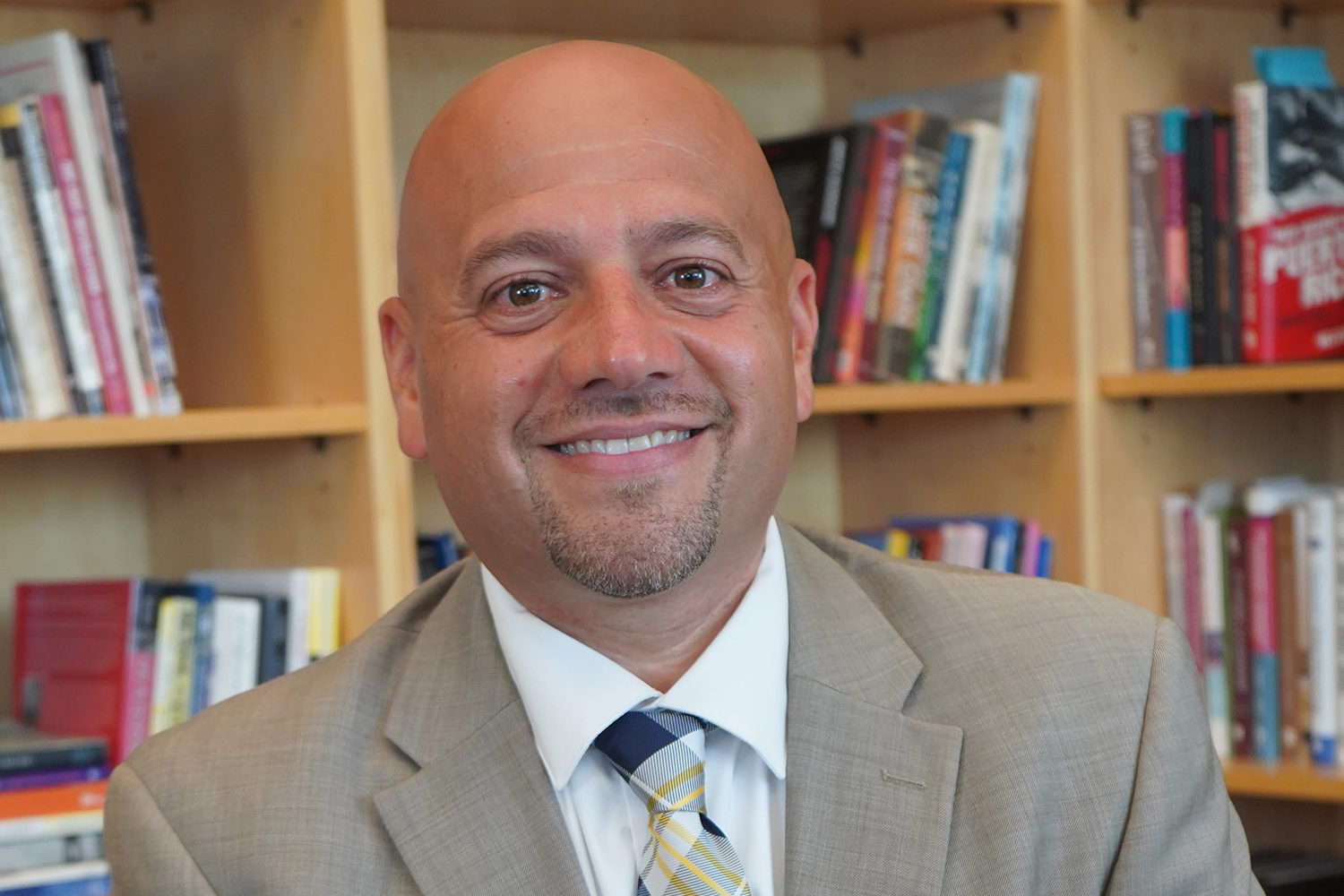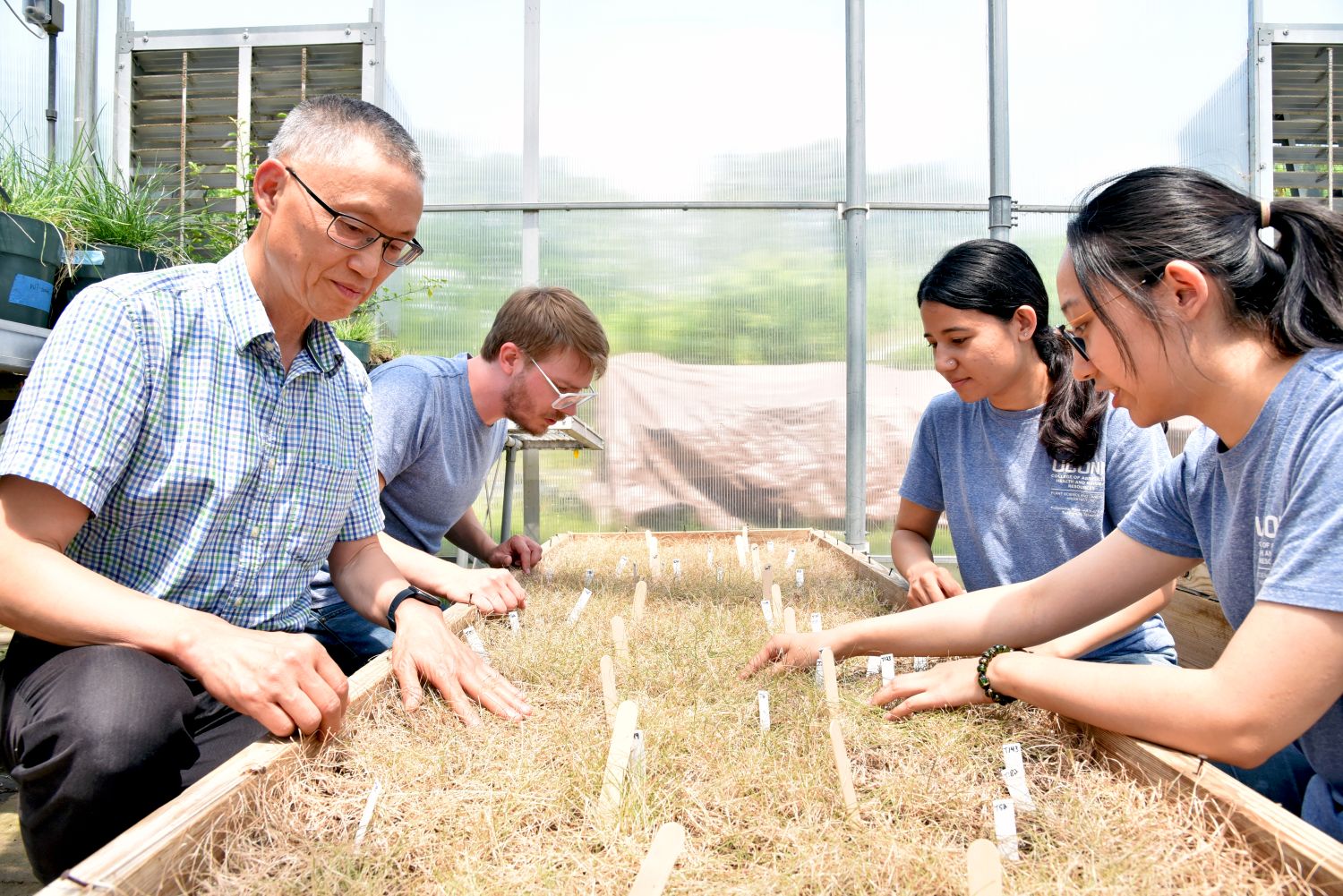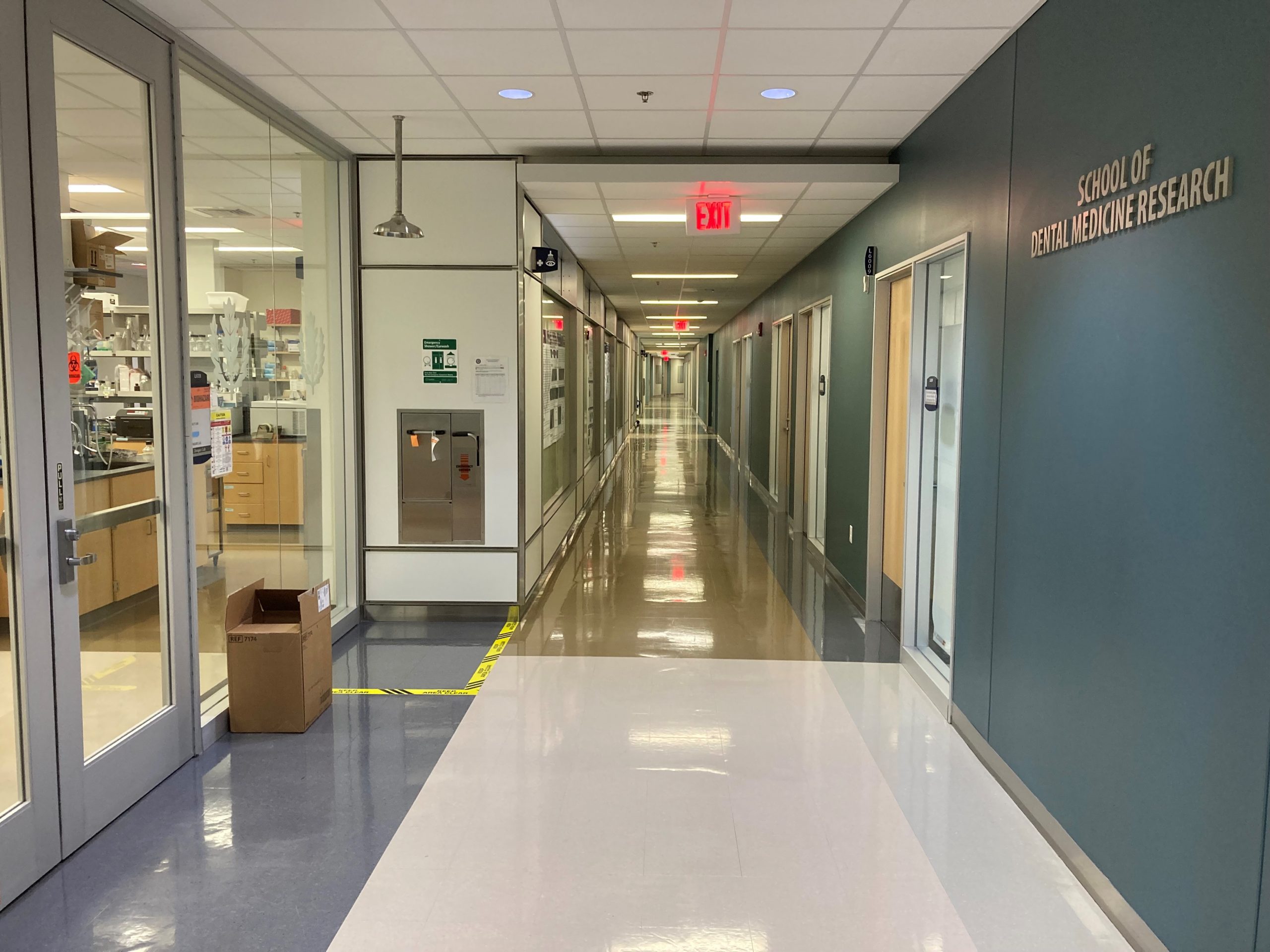
Yao Lin, assistant professor of chemistry in the College of Liberal Arts and Sciences, is inspired by nature. But despite the joys of walking by a beautiful stream and savoring a golden sunset, what really drives him is inspiration from the environment that could lead to new technologies.
“I’m interested in bio-inspired science,” he says. “I want to use the concepts of nature to make smarter materials.”
In particular, says Lin, the movements and communication between proteins – the building blocks of all life – have long stumped scientists. Chemists approximate their structure using smaller strings of polymers.
“There’s no way synthetic materials can compete with this kind of sophistication yet,” says Lin. “In biology it is essential that proteins fold together and self-organize at the right position at the right times. We’re trying to incorporative that cooperativity into our synthetic molecules.”
I’m interested in bio-inspired science. I want to use the concepts of nature to make smarter materials.
This molecular cooperativity is what makes proteins work together to form, say, fibers on the wall of a cell in your body, or the right enzymes to digest your food. In nature, says Lin, there’s not a big computer telling all the different pieces where to go and what to do – they can all communicate naturally, which is a big leap ahead of any synthetic material.
But, says Lin, you’ve got to start somewhere.
“When we make polymers, they’re like spaghetti – long and loose,” he says. “If we can get them to fold and touch each other, for example, making some helical turns, then the system will become more organized.
“Instead of making ‘spaghetti’,” he continues, “we’ll be making structures that eventually bring us functions.”
In 2011, Lin and his colleagues created a new family of what’s called giant supramolecules, made up of many octopus-like polymers that wrap around each other into a hollow tube, similarly to the natural folding and self-organization of a class of proteins called tubulins. The tube then twists again into a double helix, making the new molecules potentially very strong but lightweight.
Early in 2012, Lin received a five-year, half-million dollar CAREER grant from the National Science Foundation to continue this work, looking especially at natural self-healing fibers like silk.
“Silk is both strong and stable,” says Lin. “How does it do it?”
When asked if this strong, flexible, and lightweight material could be strong enough to stop bullets, potentially paving the way for a superhero suit of the future, Lin laughs. He doesn’t set those kinds of benchmarks, he says.
“If we understand the concept, somebody else can take it and make it into something useful,” he explains.
That’s really the part he loves about science, he says – discovery.
“I really like it when students bring in unexpected results,” he says. “When you’re always solving puzzles, it’s like being a kid. You stay young.”


